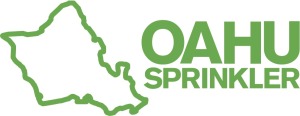Winterizing Your Home Irrigation System
With winter rapidly approaching it is a good idea to winterize your irrigation/sprinkler system before the cold weather starts. Winterization includes flushing the irrigation lines and sprinkler heads with a flow of air under pressure. Not winterizing can reduce chances of unnecessary damage to your system like pipes freezing over. Most good landscapers include this recommended procedure especially in cold climates.
What if your pipes are buried deep? Can it get cold enough to freeze them? No but the above ground implements can be touched by the cold. Water expands with the icing so any residual water left on sprinkler can freeze and cause them develop cracks and leaks. Landscapers see this damage every spring when they are set to fix freeze damage to non-winterized homes. The expense of repairs, shorter life of the system implements, wasted water, and soaring water bills these leaks make irrigation weatherization an insurance for your system.
Avoid problems in the spring by winterizing your system. This will help prevent damage to your system from winter weather and help to make the life of your system longer.
8 Steps to Water Saving Landscaping
Below are tips having a water efficient landscape saving you money on your water bill. These types of systems are invaluable under drought conditions.
1. Plant plants per their Water Needs
Separate low water plants from, for example, high water use grass which should be planted in a separate area of the yard.
2.Use Plants that require little water.
Use low water plants that require little water. Some can be beautifully colored.
- Limit grass areas
Lawns require the most water of your landscape. Limit the amount of turf your yard seems to require. Plant perennials in those grass eliminated areas.
4. Use Well Designed Systems
Use well-designed landscaping systems with are an important part of efficient irrigation. Use the winterizing principles (above). A well designed system allows for more water run-off control.
5. Schedule Irrigation Wisely
Everyday watering is a waste of water. Periodic deep watering is the best method. Morning is the best time to water and avoid loss by evaporation. Use of a timer controlled sprinkler regulator also works to eliminate water loss as you can set the timer to the optimum water times during the day or night.
6. Prepare HealthySoil
Healthy soil mixed with compost is the best to grow healthy plants and allows for decreased evaporation and runoff. Hard dirt should be moved about occasionally to increase its catching run-off effect. Compost is material that has been allowed to sit for a while and began to decay.
7. Remember to Mulch
A generous use of mulch around the plants will reduce evaporation and prevent the growth of weeds. “Mulch is a covering, as of straw, compost, or plastic sheeting, spread on the ground around plants to prevent excessive evaporation or erosion, enrich the soil and inhibit weed growth” (Dictionary.com).
8. Provide Regular Maintenance
Fix leaks in the system. Hire a qualified landscaper with knowledge or specialization in water conservation.
If you are located in Hawaii, don’t hesitate to got to hawaiisprinklers.com website for more information about sprinkler installation and repair.
